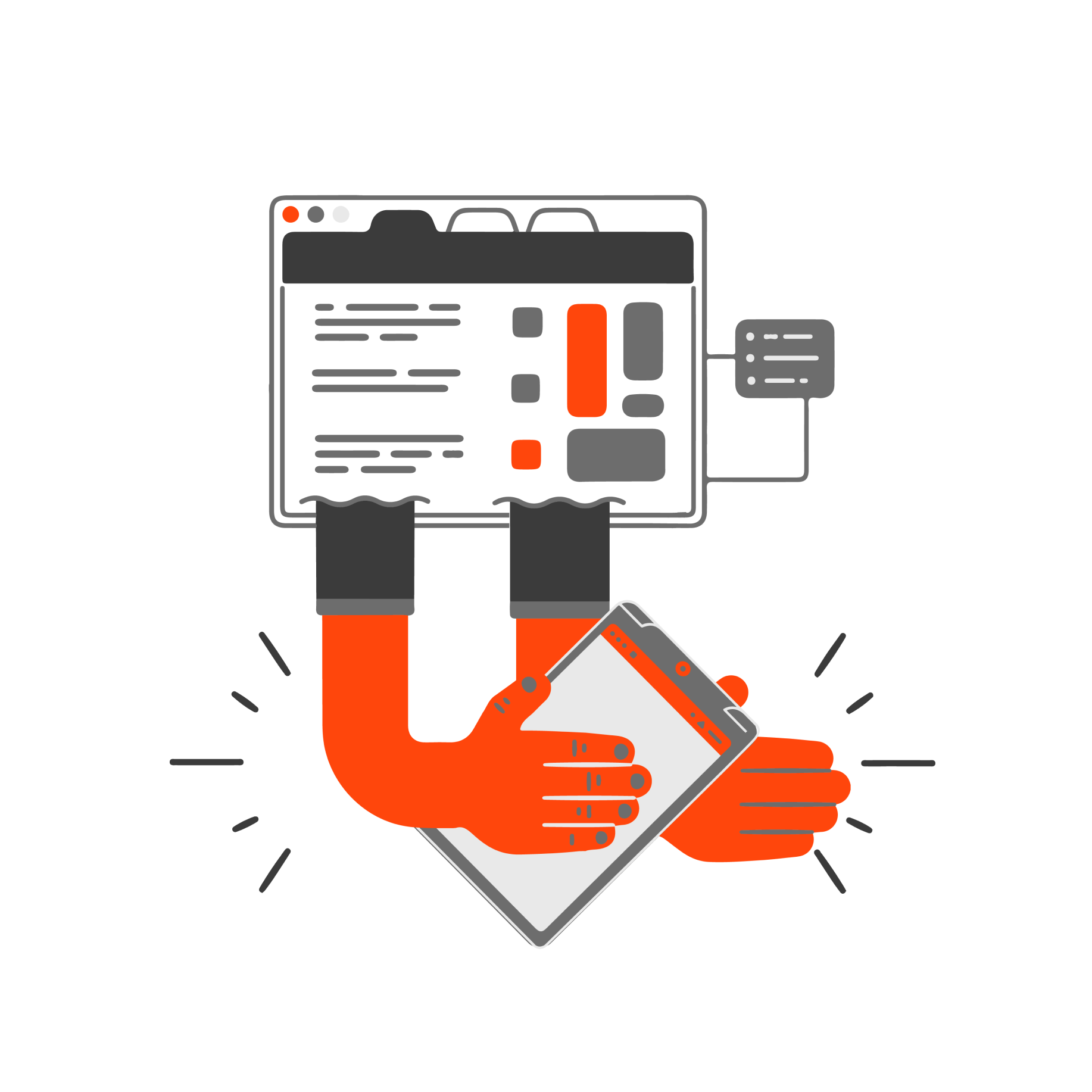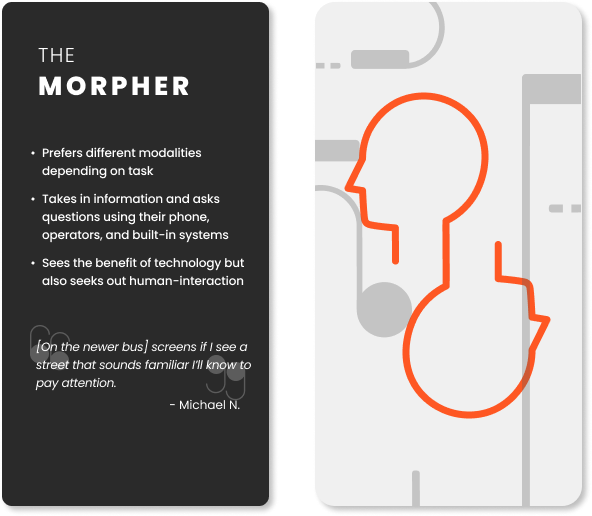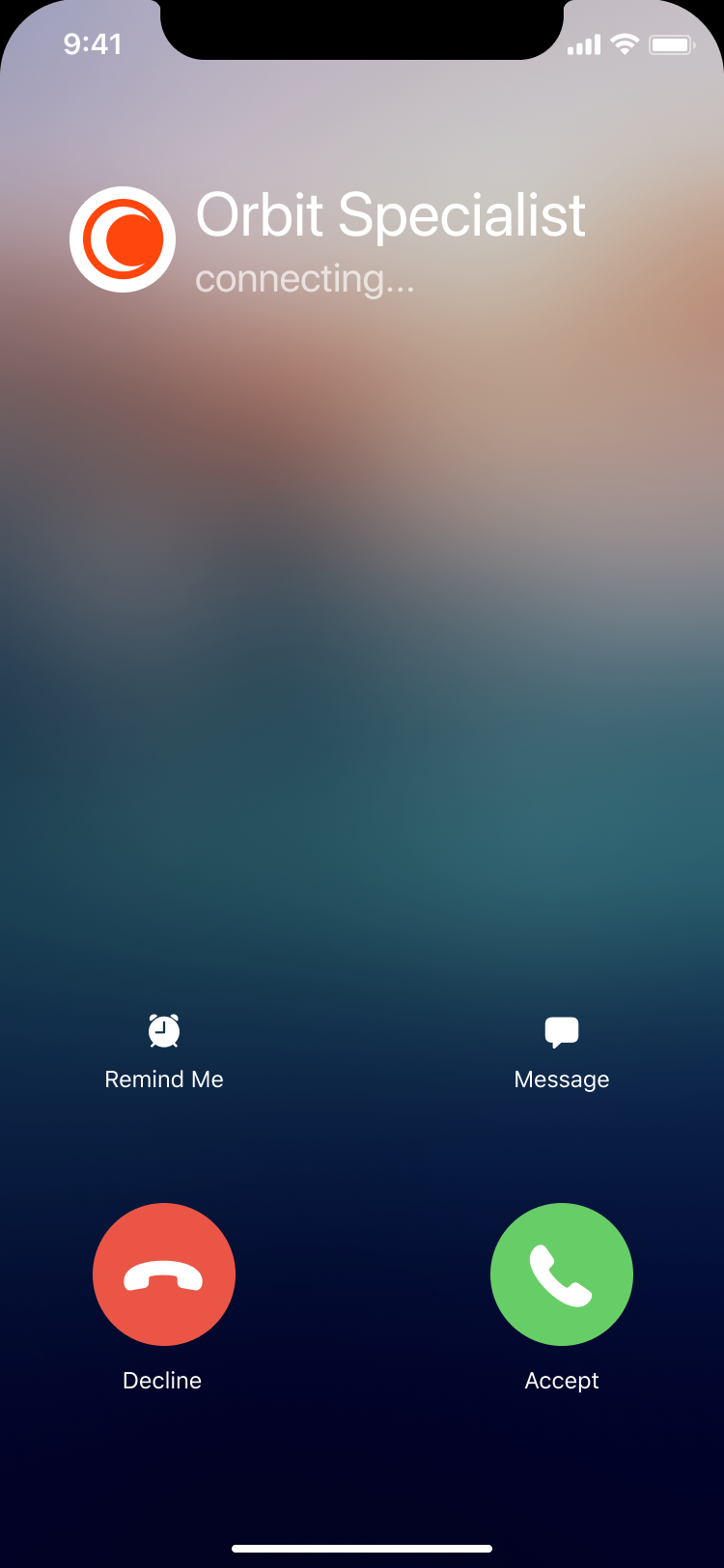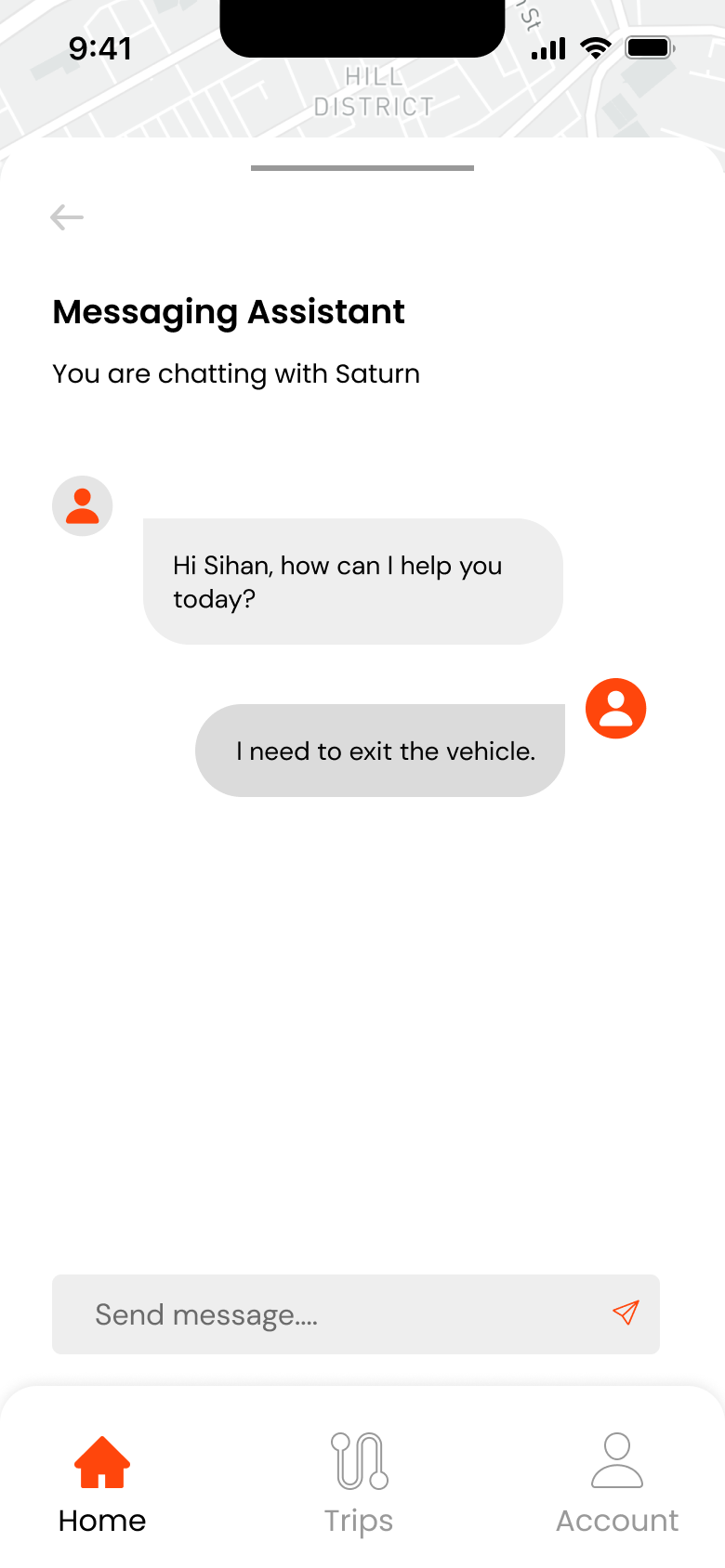Concept testing and contextual inquiries illuminated the need for multiple modalities, and that modality preferences often correlate with a passengers’ task at hand. While some passengers prefer to interact with a human, others prefer completing tasks via built-in technology or on personal devices -these preferences can change even within the same trip.
Offering multiple modalities also supports wider accessibility for passengers, since the system does not rely solely on any one sense, such as sight, touch, or sound.

“I think I prefer to speak with a person when it comes to asking for directions on the transportation. But when it comes to getting off the train or bus, I would prefer the AI or robot assistance as I believe they could be quick and reliable.”
– Passenger | Early Concept Test

A solution should allow passengers to access information via different modalities in order to ensure that users’ need for quick, up-to-date information is met no matter the platform they’re using, or task they are looking to accomplish.
The team explored an ecosystem of attendants that would be accessible to passengers via their preferred modality. This ecosystem supports users’ affinity for their personal devices by having them as a key part of the people mover experience. Personal mobile devices integrate with additional built-in systems including voice user interfaces (VUI), haptics, and in-vehicle tablet screens.


